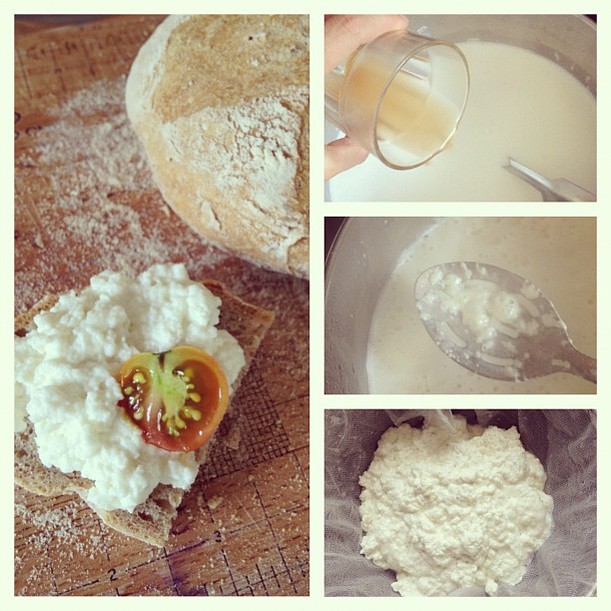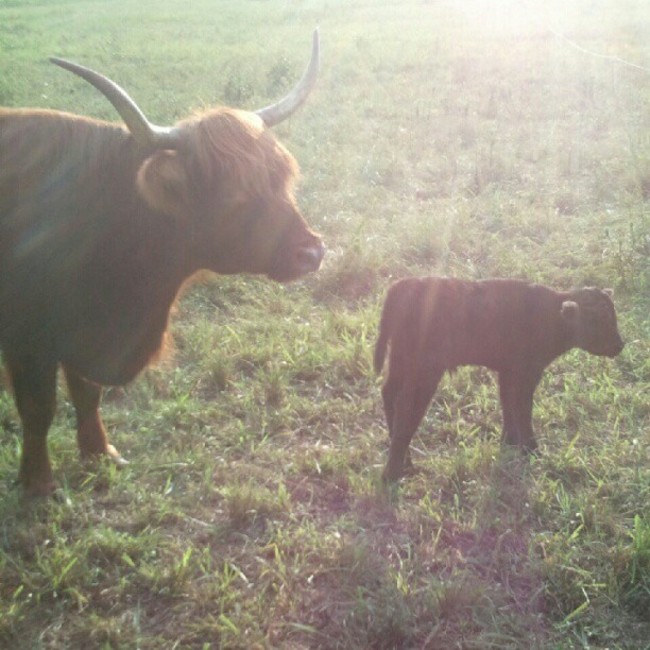 Sorry, I couldn't help myself (so sooo punny!). Why the "whole" in the title? Ricotta is actually traditionally made from the whey left over after cheesemaking, hence the "ri" (re) "cotta" (cooked). You acidify the whey or wait until it has acidified naturally after sitting for a few hours at room temp (the cultures from your first batch of cheese are still working away in there!) and then heat until the remaining curd begins to precipitate from the whey.
Sorry, I couldn't help myself (so sooo punny!). Why the "whole" in the title? Ricotta is actually traditionally made from the whey left over after cheesemaking, hence the "ri" (re) "cotta" (cooked). You acidify the whey or wait until it has acidified naturally after sitting for a few hours at room temp (the cultures from your first batch of cheese are still working away in there!) and then heat until the remaining curd begins to precipitate from the whey.
Any who - that's not what I made on this particular day. I wanted ricotta but unfortunately didn't have time to make any more than one cheese. Luckily, I'd been there before and knew just what to do.


